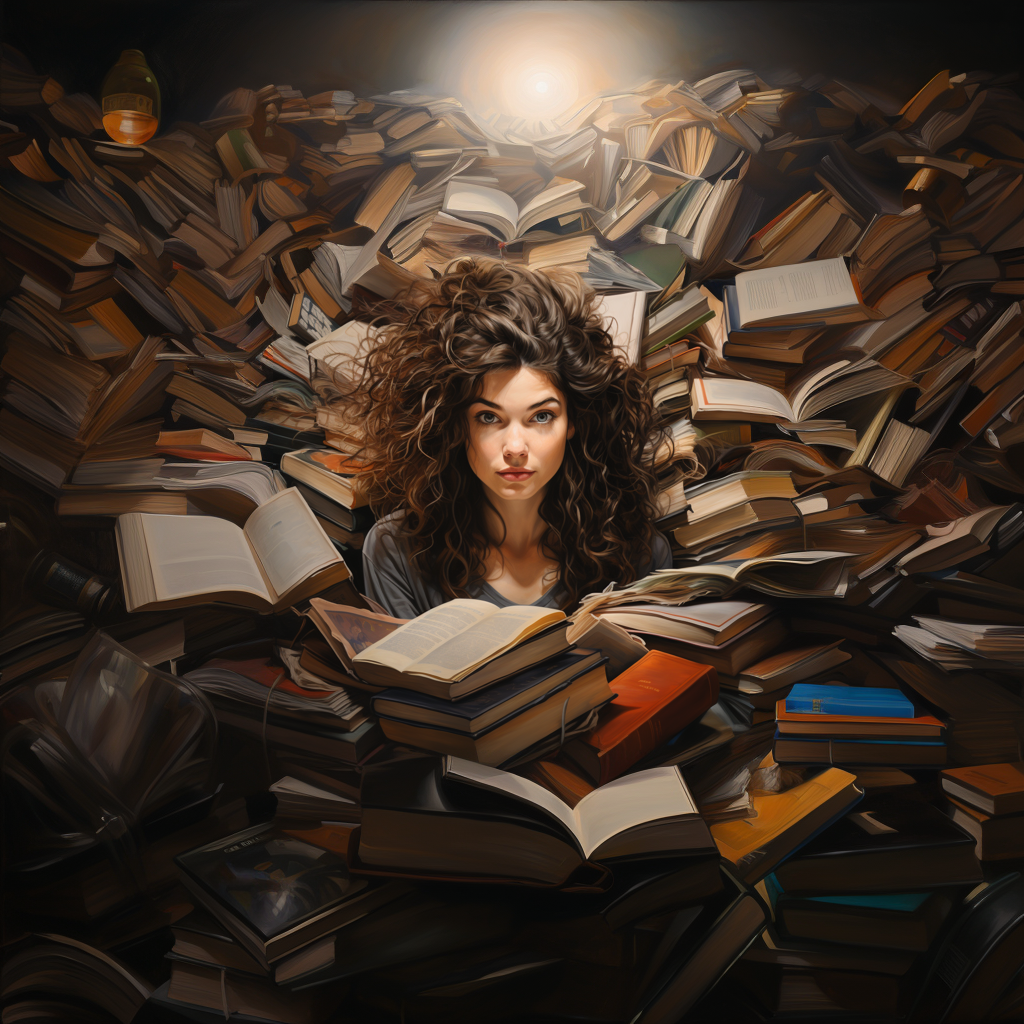Once upon a time, in a land not too dissimilar from our own, books reigned supreme. They were the kings and queens of the narrative kingdom, unrivaled in their power to captivate, enlighten, and entertain. Fast forward a few centuries, add in a dash of technological advancement, and suddenly, these noble volumes found themselves contending with a new force – the silver screen. Today, every time a beloved book is translated into the language of moving pictures, it sets off a wave of heated discussion, and the eternal question – “Which is better, the book or the movie?” – starts bouncing around like a pinball in an arcade machine. Ah, the drama! The suspense! It’s like the climactic scene of a blockbuster movie, or the final pages of a nail-biting thriller.
In this cinematic journey, we’re about to embark upon, we’ll examine this age-old debate from all angles, armed with popcorn in one hand and a dog-eared paperback in the other. Whether you’re a bibliophile who cherishes the scent of old pages, a cinephile who lives for the thrill of the opening credits, or an undecided soul caught in the crossfire of this intriguing battle, this expedition is for you.
Books to Movies
Consider this: When reading ‘Moby Dick,’ did you envision the great white whale as colossal as it was in the 1956 film adaptation? Or when you watched ‘The Shining,’ did Stanley Kubrick’s interpretation of the Overlook Hotel’s eerie maze match the labyrinth you had built in your mind while reading Stephen King’s original masterpiece?
Such is the power of books and movies. They incite our imaginations, provoke our emotions, and etch indelible memories into the canvas of our minds. Yet, the tussle for dominance between literature and cinema is as epic as the clash of titans. And like a protagonist wrestling with their inner demons, we’re all torn between our love for the written word and the cinematic spectacle.
Hold onto your hats, folks! It’s time to delve deeper into the labyrinthine plot of ‘Books vs. Their Film Adaptations: A Comparative Study.’ Let’s dive right into the dramatic backstory of this riveting narrative. Roll the film, err… turn the page? No, let’s just roll with it! On to the history!

Historical Context
It all began with the dawn of the film industry in the late 19th century. With the advent of motion pictures, novels, and plays were recognized as a goldmine of pre-packaged narratives, ripe for cinematic adaptation. From the silent film era’s “Dr. Jekyll and Mr. Hyde” to the modern blockbuster era’s “Harry Potter” series, the symbiosis between literature and cinema has thrived over the centuries.
Key Figures and Notable Occurrences
In the realm of books turned movies, a cast of characters, both fictional and real, have managed to leave their mark. Let’s take a stroll down the Hall of Fame, where book characters morphed into their cinematic avatars and went on to shake the pillars of popular culture.
First up, we have Harper Lee’s masterpiece, ‘To Kill a Mockingbird.’ A marvel of a book, which was transformed into an equally impressive film. The tale’s hero, Atticus Finch, leaped from the pages onto the silver screen, embodied by none other than the legendary Gregory Peck. His Oscar-winning performance as the virtuous lawyer fighting racial inequality in the heart of the American south is etched in our collective memory. Can anyone forget his iconic glasses and the sheer gravitas with which he delivered his lines?
And who can dismiss the bone-jarring, adrenaline-pumping world of ‘Fight Club’? Chuck Palahniuk penned a whirlwind of a novel, a potent cocktail of social commentary, dark humor, and, well, bare-knuckle brawling. When director David Fincher got his hands on the script, he twisted it into an unforgettable cinematic experience, with Brad Pitt and Edward Norton beating the living daylights out of each other and our complacent perceptions of consumerism. Do you recall the first rule of Fight Club?
Let us go back in time
But wait, there’s more! We have the Dickensian delight, ‘Oliver Twist.’ This tale of an orphan navigating the grimy underbelly of Victorian London has seen numerous screen adaptations. Each rendition brought a fresh perspective to the story, and yet none strayed too far from the rich narrative woven by Dickens. The 1968 musical film version even won an Academy Award for Best Picture, proving that the pen might be mightier than the sword, but a song and dance routine can certainly steal the show.
Our last stop (for now!) is J.K. Rowling’s wizarding world. Ah, the magic of ‘Harry Potter’! Millions of readers envisioned the bespectacled boy wizard, his friends, his foes, and the enchanting Hogwarts in their minds. Then came the films, and suddenly, these characters were no longer figments of our imagination but real, tangible beings on the big screen. Daniel Radcliffe, Emma Watson, and Rupert Grint became synonymous with Harry, Hermione, and Ron, creating a legacy that transcends generations.
From classic literature to contemporary fiction, the transition of characters and narratives from the written word to the visual spectacle is a voyage that’s as fascinating as it is complex. Hang on to your bookmarks, because next, we’re heading into the real-world implications of these adaptations!

Real-world Implications
We’ve seen the big-screen magic of iconic characters and narrative twists, but what does this spellbinding show mean for us in the real world? The implications, my friends, are as vast and varied as the genres on a bookstore shelf.
Firstly, consider the phenomenal surge in book sales when a cinematic adaptation is announced. It’s like a game of dominos, where the first tile is the film announcement and the subsequent ones are the book flying off the shelves, making a beeline to the cash registers. Publishers rub their hands with glee while authors get to enjoy another dance in the spotlight. Can you imagine George R.R. Martin’s delight when ‘Game of Thrones’ got the HBO nod? Cue the ‘cha-ching’!
Then there’s the birth of a whole new fandom universe. When Suzanne Collins’ ‘The Hunger Games’ leapt off the pages and onto the big screen, it didn’t just make a blockbuster film series, it spawned an entire generation of archery enthusiasts. Suddenly, being good with a bow and arrow was cool, thanks to Jennifer Lawrence’s Katniss Everdeen. Who knew dystopian novels could impact sports trends?
Off the Pages and Into the World: Real-World Implications of Book-to-Film Adaptations
And let’s not forget the tourism boost. Remember when ‘The Da Vinci Code’ hit the theatres? Tourists flocked to the Louvre in Paris and Rosslyn Chapel in Scotland, itching to experience the thrill of the chase that Tom Hanks’ Robert Langdon navigated in the movie. Those locations, previously known only to art buffs and historians, suddenly found a spot on the global tourist map. Talk about a vacation inspired by literature and cinema!
The real-world implications also extend to inspiring societal discourse. When ’12 Years a Slave,’ a memoir written in 1853 by Solomon Northup, was turned into a movie, it reignited discussions on racial justice and history, encouraging audiences to reexamine the harsh realities of slavery.
In essence, the relationship between books and their film adaptations is like a mirror reflecting our own world – the sales, the social trends, the cultural dialogues – it all finds resonance in this dynamic duo. Hold tight to your popcorn tub, because up next, we’re about to dive into the murky waters of challenges and controversies. Let the plot thicken!
Challenges and Controversies
With every flicker of the film reel, there are challenges aplenty, and controversies never cease to follow. The realm of book-to-film adaptations is not immune to this, and in some ways, these controversies add a dash of extra salted caramel sauce to our popcorn tub.
Imagine for a moment, you’re a filmmaker tasked with adapting a best-selling novel. Sounds exciting, right? However, you have to condense hundreds of pages, sometimes thousands (looking at you, ‘War and Peace’), into a two-hour runtime. It’s like trying to stuff an elephant into a clown car – entertaining to watch, maybe, but certainly not easy to pull off.
For example, the controversy around Peter Jackson’s ‘The Hobbit’ trilogy. J.R.R. Tolkien’s classic novel was turned into not one, not two, but three lengthy films. Fans were divided; some savored every extra minute in Middle-earth, while others felt it was an overextended dragon ride.
The Behind-the-Scenes Drama andControversies in Book-to-Film Adaptations
There’s also the heated debate over casting decisions. Let’s recall the uproar when Tom Cruise was cast as Jack Reacher in Lee Child’s book series. Readers envisioned Reacher as a towering figure of intimidation, a stark contrast to Cruise’s more compact build. Many a fan was left scratching their heads, wondering if Hollywood had collectively forgotten how to read character descriptions.
Then there are changes to the narrative that can spark outcry. Remember the final film of the ‘Harry Potter’ series, when the climactic duel between Harry and Voldemort differed significantly from J.K. Rowling’s version? Fans were up in arms over the change, feeling that the cinematic spectacle had eclipsed the book’s core narrative.
These are just a few of the challenges and controversies swirling around the realm of book-to-film adaptations. As we can see, the process isn’t as simple as “lights, camera, action!” Instead, it’s more of a tightrope walk over a pit of rabid, book-loving crocodiles. So, what’s the lasting impact of all these adaptations? Let’s turn the page to find out!
Impact and Influence
The tremors of book-to-film adaptations resonate far and wide, their impact as multifaceted as a finely cut gem. They influence not only the industries of literature and film but also seep into the realms of fashion, academia, tourism, and even our day-to-day lingo.
Let’s chat about fashion first. Do you remember ‘The Great Gatsby’? F. Scott Fitzgerald’s novel was turned into a visually stunning film featuring Leonardo DiCaprio and a whole host of flapper dresses. The film set the fashion world alight, sparking a roaring twenties revival that saw fedoras and sequined headbands making a comeback.
Next, the world of academia. Adaptations often stir scholarly debates about fidelity to source material, interpretations of narrative, and thematic shifts. The critical analysis of Stanley Kubrick’s adaptation of Stephen King’s ‘The Shining’ has kept many a film studies student busy. These debates further our understanding of both mediums, promoting a culture of analytical thinking.
Cultural Shifts and Storytelling Sparks
The influence on tourism, as we’ve already noted, can be substantial. Take New Zealand, for instance. Since Peter Jackson’s ‘Lord of the Rings’ and ‘The Hobbit’ trilogies, the country has seen a surge in tourism, with fans eager to visit the sweeping landscapes that served as Middle-earth. These films turned New Zealand into a must-visit destination for fantasy lovers.
And what about the phrases that enter our day-to-day language thanks to these adaptations? Thanks to ‘The Godfather’ films, “I’m going to make him an offer he can’t refuse” has become an offer we can’t refuse to quote.
Finally, let’s not forget the most important influence – the spark of imagination and the love for storytelling these adaptations ignite. Whether we read a book because of a film or vice versa, the result is the same: We dive headfirst into new worlds, meet unforgettable characters, and live myriad lives from the comfort of our armchair.
The impact and influence of book-to-film adaptations are as diverse as the stories themselves. As we turn the last page of this chapter, let’s venture into the future prospects of this exciting intersection of literature and cinema. Buckle up, folks! The end is nigh, but the journey is just beginning.
Future Prospects
Hold onto your bookmarks, dear readers, as we step into the portal of the future. With technology constantly evolving and storytelling continually reinventing itself, the prospects for book-to-film adaptations are as thrilling as a cliffhanger ending.
With advancements in CGI and virtual reality, we’re likely to see books come to life in ways we’ve only dreamed of. Picture immersive 3D adaptations of complex fantasy worlds like those in ‘Dune’ or ‘Discworld’. You won’t just be watching Paul Atreides ride a sandworm; you’ll be right there with him, feeling every seismic shift beneath you.
Simultaneously, we’re seeing a rise in diverse voices in literature. As these narratives gain traction, it’s only a matter of time before they’re adapted into films, opening doors for representation on the silver screen. Think of the incredible impact of Angie Thomas’s ‘The Hate U Give’, both as a book and as a movie, in addressing racial inequality.
And let’s not forget the burgeoning world of streaming platforms. With the likes of Netflix, Hulu, and Amazon Prime, we’re likely to see more serialized adaptations. The slow-burn success of shows like ‘The Handmaid’s Tale’ and ‘Bridgerton’ indicates a promising future for detailed, episodic adaptations of our favorite books.
The future, it seems, is as bright as the glare on a newly minted Oscar trophy. But before we roll the credits, let’s wrap up with a bang!
Conclusion
From stoking book sales and influencing fashion trends to sparking academic debates and tourism surges, book-to-film adaptations have a significant impact on our world. Yes, they come with their fair share of controversies – casting woes, narrative changes, the challenge of condensation – but isn’t that what makes the journey so entertaining?
Whether you’re Team Book or Team Movie, one thing is clear: these adaptations connect us to stories in new, immersive ways. They invite us into the universes we love, letting us walk in the shoes of our favorite characters and live their adventures, all from the comfort of our couch.
So, as the credits roll, remember: the magic of storytelling is at the heart of both books and their film adaptations. Whether bound by a spine or captured in frames, stories have the power to change us, move us, and take us on unforgettable journeys. So, what are you waiting for? Grab a book, hit play on that movie, and dive into another world. And don’t forget to pop the popcorn!
As always, keep reading, keep watching, and most importantly, keep imagining. The next great story is just around the corner, ready to leap off the page or screen and straight into your heart.
Lights. Camera. Read.

